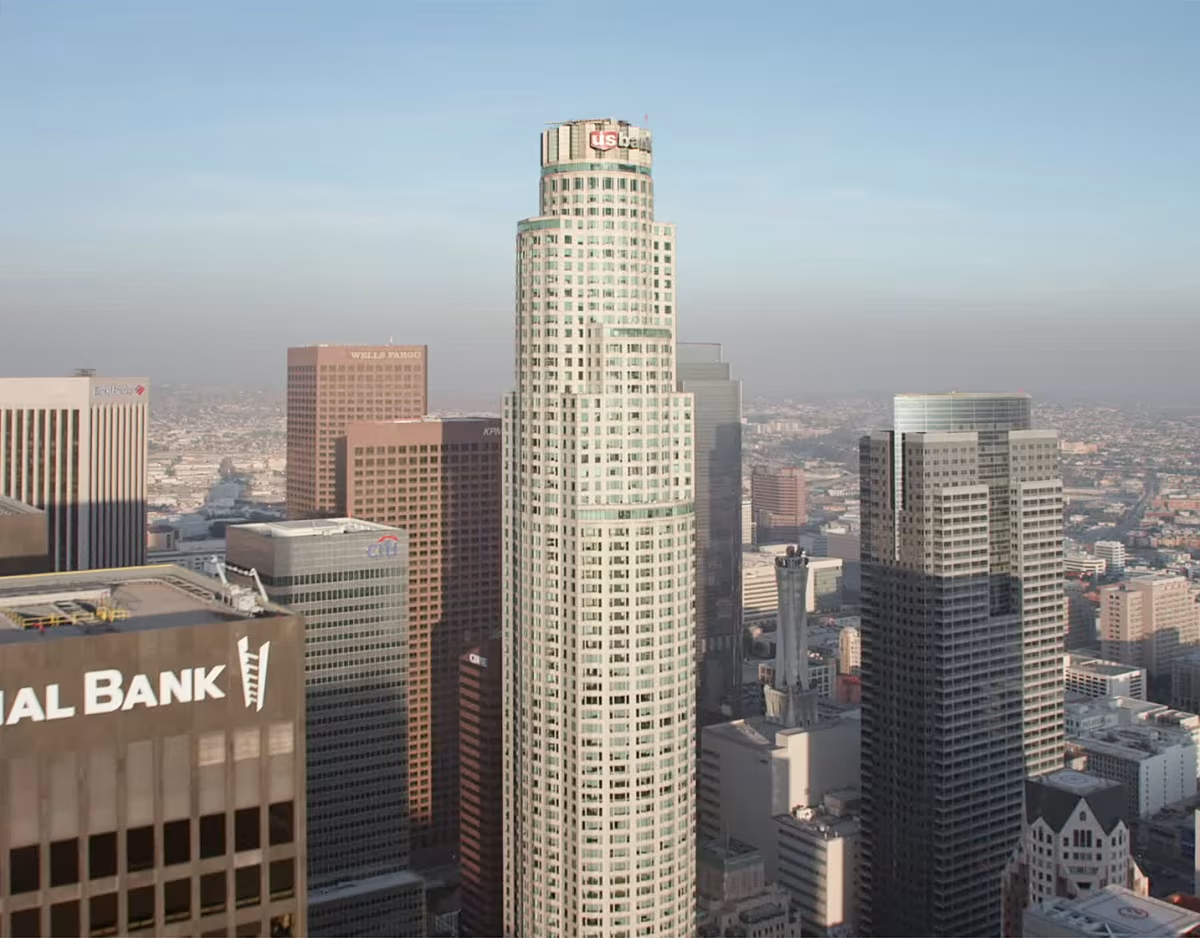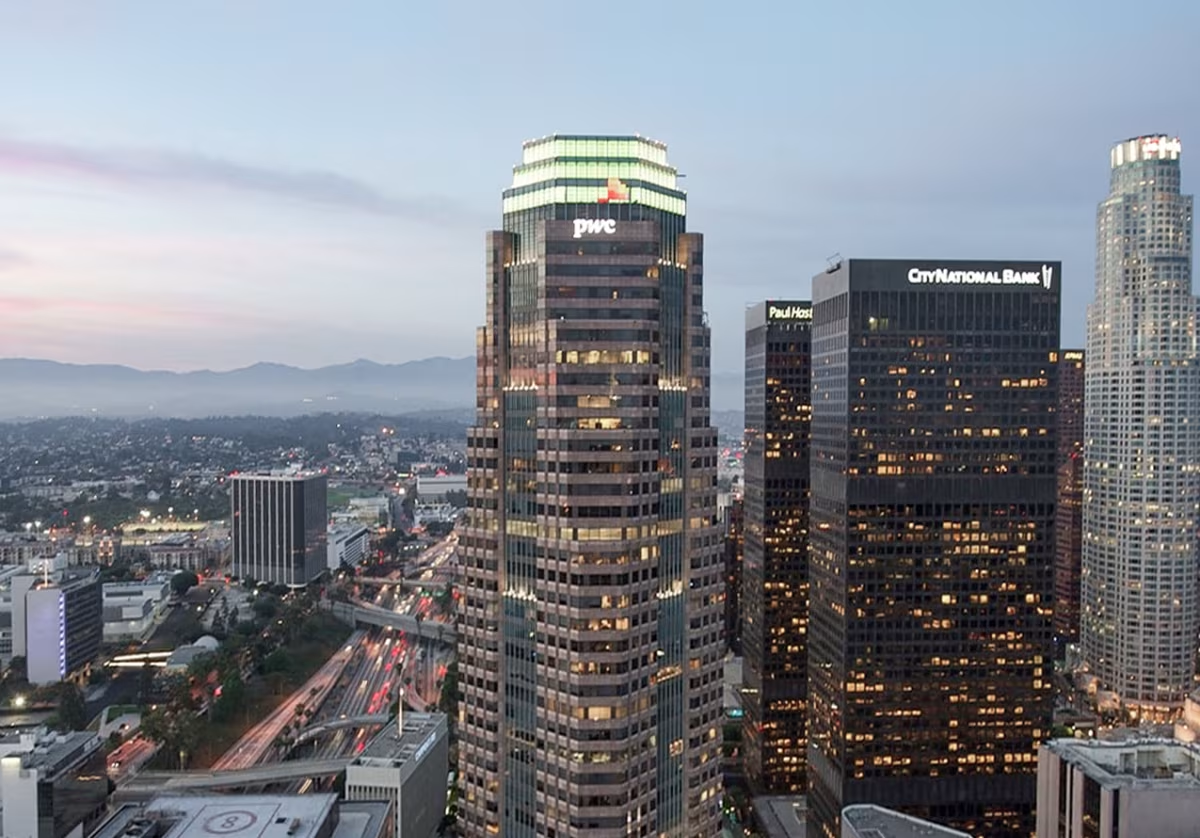U.S. Bank Tower vs Figueroa at Wilshire Building


Comparing the U.S. Bank Tower and the Figueroa at Wilshire Building is interesting because they both stand in Los Angeles, CA, and were completed just one year apart, but they were designed by different architects.
This offers a unique glimpse at how rival designers approached projects in the same city during the same era.
Height & Size
The U.S. Bank Tower is clearly the larger tower of the two, both in terms of height and number of floors. It rises to 1017ft (310m) with 73 floors above ground, while the Figueroa at Wilshire Building reaches 719ft (219m) with 52 floors above ground.
U.S. Bank Tower also offers more total built-up area, a total fo 1,754,516 sqf (163,000m2), which is about 705,541 sqf (65,547m2) more than what the Figueroa at Wilshire Building offers.
Of course, each project may have faced different briefs or regulatory constraints, which we don't really know about and could also explain the outcome.
Architectural Style
Both the U.S. Bank Tower and the Figueroa at Wilshire Building were designed in line with the aesthetic conventions of the Postmodernism style.
At the time, this style was at the height of its popularity. So both Pei Cobb Freed & Partners and Albert C. Martin & Associates followed what was in many ways expected of them, producing designs that fit comfortably within contemporary architectural norms, rather than breaking with convention.
Uses
Both the U.S. Bank Tower and the Figueroa at Wilshire Building were designed to serve as commercial towers, and that has remained their main use since their completion, serving similar roles in the urban fabric.
The U.S. Bank Tower also provides 1396 parking spaces.
Structure & Facade
The two towers rely on different structural systems, reflecting distinct engineering strategies.
The U.S. Bank Tower uses a Framed Tube In Tube structural system, which combines a strong central core with a perimeter tube of columns, while the Figueroa at Wilshire Building uses a Frame system, that relies on a regular grid of columns and beams to sustain its weight.
Yet, when it comes to their facade, they both employed the same solution, a Curtain Wall facade.
A curtain wall is a non-load-bearing facade hung from the structural frame. It is anchored to floor slabs and transfers only its own weight and wind loads, allowing for sleek, glassy exteriors.
| U.S. Bank Tower | Figueroa at Wilshire Building | |
|---|---|---|
| Pei Cobb Freed & Partners | Architect | Albert C. Martin & Associates |
| 1987 | Construction Started | 1988 |
| 1989 | Year Completed | 1990 |
| Postmodernism | Architectural Style | Postmodernism |
| Commercial | Current Use | Commercial |
| 73 | Floors Above Ground | 52 |
| 2 | Floors Below Ground | 5 |
| 310 m | Height (m) | 219 m |
| 163000 | Built-up Area (m²) | 97453 |
| Framed Tube In Tube | Structure Type | Frame |
| Concrete And Steel | Vertical Structure Material | Steel |
| Concrete | Horizontal Structure Material | Concrete |
| No | Facade Structural? | No |
| Glass, Aluminum | Main Facade Material | Granite, Glass |
| Turner Construction Company | Main Contractor | Swinerton |
| Maguire Partners | Developer | Brookfield Properties |
| CBM Engineers | Structural Engineer | CBM Engineer |
| CA | State | CA |
| Los Angeles | City | Los Angeles |
| 633 West Fifth Street | Address | 601 S. Figueroa Street |